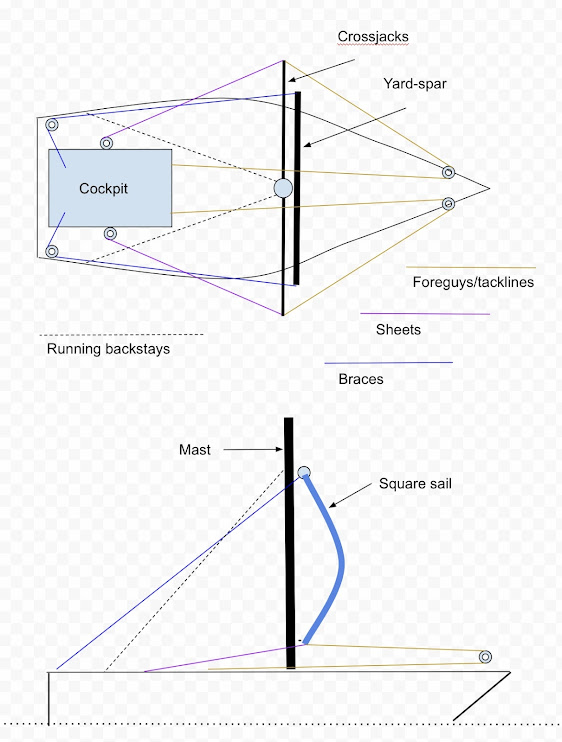<< START HERE >>
How did I find myself on this wacky nautical quest?...
A few years ago, during a holiday trip to the Iberian peninsula, I went to the Maritime Museum in Lisbon and was fascinated by the evolution of sailing vessels during Portugal’s glory years of maritime exploration. Back then, ships were primarily square-rigged and as I was trying to work out the difference between a brig, a carrack, and a galleon, I asked myself ‘why don’t I see any square-rigged vessels nowadays’? Of course, the answer is ‘because fore-and-aft rigged vessels sail much better upwind, you duff-brained, grobian landlubber!’.
If you’re like me, you either own or charter a sloop, cutter, or ketch/yawl and simply enjoy being out on the water and getting from point A to point B in as lazy a manner as possible; to me, this means sailing downwind all the time! I don’t take much pleasure in beating upwind, tacking one way, then the other, and making scant progress towards my destination (and the resulting anchorage cocktails). My favorite type of sailing is quietly running downwind with a gentle swell on the stern, wing-on-wing, with the mainsail to starboard and the jib poled out to port. I end up motoring around more than I’d like anyway due to the light winds found in my summer cruising grounds, so what if I just decided one day to be a boater that motors upwind and sails downwind? What kind of boat would such a marin sacrilège design and build?
This blog details my attempt at refurbishing and converting a production sloop (Laguna 26) into a single-masted sailboat which employs a square-sail as the primary mode of downwind propulsion while retaining the ability to sail fore-and-aft rigged with a mainsail & foresail...hereafter referred to as a sqoop. This configuration is not as strange as it first may seem; sloops built in early New England shipyards were often rigged with a single mast, a boom for the mainsail and a yard for a square topsail.
I also intend to eventually replace the four-cycle gasoline-powered outboard motor with an electric motor of equivalent power and the required battery bank and solar PV array.
To go to the HOME page and start reading my postings (organized newest to oldest), click the back arrow or simply click HERE.
If you are technically inclined, engineering-minded, or simply a sailing geek, here is the link to the design document:
 |
| Rigging diagram |

